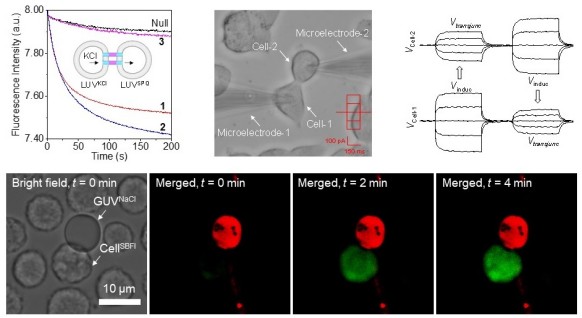Natural gap junctions are a type of channel protein responsible for intercellular signalling and mass communication. However, the scope of applications for these proteins is limited as they cannot be prepared at a large scale and are unable to spontaneously insert into cell membranes in vitro. The construction of artificial gap junctions may provide an alternative strategy for preparing analogues of the natural proteins and bottom–up building blocks necessary for the synthesis of artificial cells. Here we show the construction of artificial gap junction channels from unimolecular tubular molecules consisting of alternately arranged positively and negatively charged pillar[5]arene motifs. These molecules feature a hydrophobic–hydrophilic–hydrophobic triblock structure that allows them to efficiently insert into two adjacent plasma membranes and stretch across the gap between the two membranes to form gap junctions. Similar to natural gap junction channels, the synthetic channels could mediate intercellular signal coupling and reactive oxygen species transmission, leading to cellular activity.
https://www.nature.com/articles/s41557-024-01519-8

